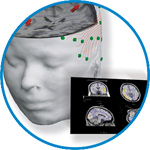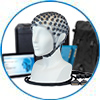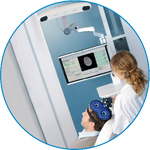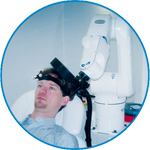- Home
- About ANT
-
Products

asa
asa is a highly flexible EEG/ERP and MEG analysis package with a variety of source reconstruction, signal analysis and MRI processing features.
.jpg)
eego mylab
The new frontier in multimodal brain research. With up to 16 kHz sampling rate, 256 EEG channels and unique software features, eego mylab gives you an unprecedented in-depth understanding of the human brain.

eego sports
eego sports offers complete freedom to collect high-density EEG data, bipolar EMG signals, and a variety of physiological sensor data, wherever and whenever required, with publish quality data in less than 15 minutes!

waveguard net
The waveguard net sets a new standard for research applications requiring high-density EEG data acquisition with quick preparation time, high flexibility, and subject comfort.

visor2
Our new and upgraded visor2 solutions integrate all the latest technologies for navigated rTMS, dual-coil navigation support, EEG-TMS recordings and pre-surgical evaluation for the highest quality in research and clinical procedures.

powerMAG ANT
The PowerMAG ANT 100 rTMS stimulator is designed for the specific needs of high-end TMS applications. Powerful high-frequency TMS as well as high precise single pulse and repetitive pulse protocols are combined in one single device.

xensor
xensor offers the solution for digitization of 3D electrode positions. xensor takes care of the whole procedure; it records, visualizes and stores positions acquired with a dedicated digitizer.

waveguard original
waveguard original is the cap solution for EEG measurements compatible with fMRI, MEG and TMS system. Use of active shielding guarantees performance in even the most demanding environments.

waveguard connect
waveguard connect EEG caps are a perfect match for hospitals and institutes aiming at reliable EEG, maximum uptime and great patient comfort! For optimal signal quality, the electrodes are made of pure, solid tin.

waveguard touch
waveguard touch is a dry electrode EEG cap. The unique Ag/AgCl coated soft polymer electrodes provide stable, research-grade EEG signals while maintaining subject comfort. The combination of these innovative dry electrodes and the industry-leading waveguard cap makes waveguard touch the best solution for dry EEG.

smartmove
smartmove allows planning of a complete TMS session ahead by defining stimulation sites based on anatomical MRI information and functional information like fMRI, PET or EEG/MEG.
Stay - References
- Support
- Events
- News
- Contact Us
You are here
Deep brain stimulation evoked potentials may relate to clinical benefit in childhood dystonia
Deep brain stimulation evoked potentials may relate to clinical benefit in childhood dystonia
Background
Deep brain stimulation (DBS) of the globus pallidus internus (GPi) is a treatment for severe childhood-onset dystonia. A common challenge for clinicians is determining which contacts of the DBS electrode to stimulate in order to provide maximum future benefit to the patient.
Objective
To characterize how the cortical responses to DBS relate to stimulation parameters (i.e. electrode contacts, voltage, and pulse width) and clinical outcomes.
Methods
We examined 11 patients with dystonia undergoing DBS therapy (9-21 years old when implanted). We varied the active contacts, voltage, and pulse width of the stimulating electrode and analyzed the deep-brain stimulator evoked potentials (DBSEPs) measured with electroencephalagoram, and assessed symptoms with the Barry-Albright dystonia scale. Statistical tests included: Repeated measures ANOVA, Mann-Whitney U-test and paired t-test.
Results
DBSEPs near sensorimotor areas were larger ipsilaterally than contralaterally (P = 0.007). The rate of DBSEP amplitude increase with respect to stimulator voltage (voltage gain) and pulse width (pulse width gain) varied across subjects and stimulating contacts. Voltage gains were significantly higher among patients who showed larger improvements with DBS (P = 0.038). Additionally, a within-subject comparison of all patients showed that voltage gains were higher for contacts chosen for chronic stimulation as compared to those that were not (P = 0.007).
Conclusions
DBSEPs may be good predictors of therapeutic response to stimulation at different electrode contacts. Furthermore, effective DBS therapy appears to modulate sensorimotor cortex through pathways involving the GPi. These findings may help clinicians optimize stimulator programming and may eventually lead to improved targeting during implantation.
Highlights
•We examined children with dystonia receiving deep brain stimulation (DBS) therapy
•We measured changes in cortical activity evoked by stimulation of basal ganglia
•Specific characteristics of evoked activity were related to clinical improvements
Click here for more information.

 Read more
Read more.jpg)




